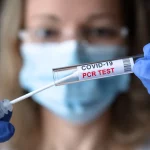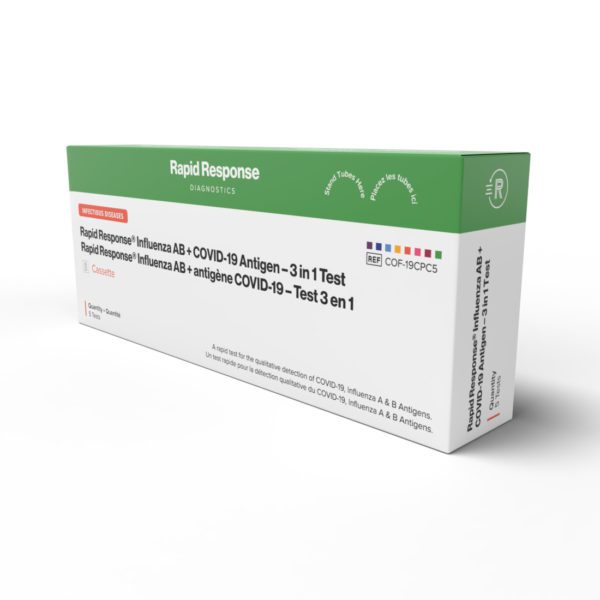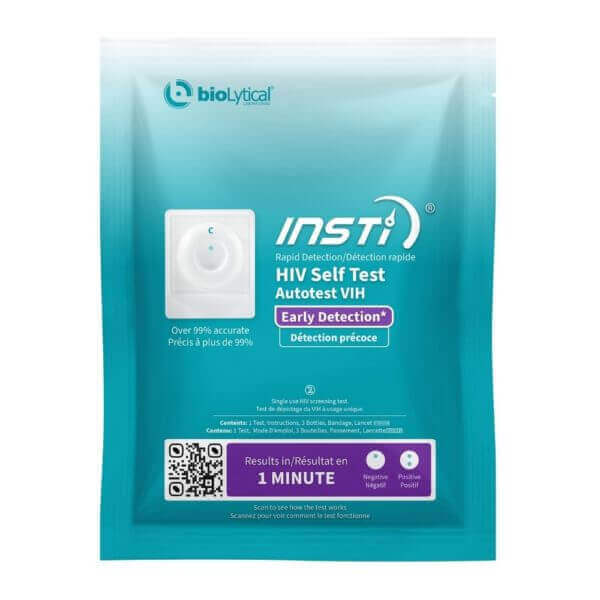Vitamin D, or the “sunshine vitamin,” is vital for healthy bones and preventing conditions like osteoporosis and rickets. The frequency of Vitamin D monitoring is important to understand the levels of this nutrient in our blood to determine if we need supplements or other interventions. Deficiency in vitamin D is common and can lead to various health issues, including:
- cardiovascular disease
- diabetes
- cancer
However, healthcare providers are still debating how often we should monitor our vitamin D levels since there has yet to be unanimously agreed on the optimal frequency. In this article, we will explore the current knowledge about how often we should monitor our vitamin D levels and provide practical insights for healthcare professionals.
Note that frequency should be personalized based on risk factors, health status, and conditions affecting vitamin D levels. If you’re curious about your own vitamin D level, you can order a self-test to monitor your deficiency.
Why Monitor Vitamin D
Monitoring vitamin D levels serves the purpose of ensuring individuals maintain sufficient levels of this essential nutrient. Vitamin D plays a crucial role in the growth and development of bones, teeth, muscles, immune function, cell growth, and inflammation regulation. Since the body cannot produce vitamin D independently, obtaining it from fortified foods or supplements is necessary. However, despite widespread supplementation, many still experience vitamin D deficiency due to varying factors like age, diet, sunlight exposure, and chronic illnesses. Regular monitoring is essential to ensure individuals receive the necessary amount of this vital nutrient.
Methods
Study Design
The study design employed in research projects plays a pivotal role in determining the frequency of vitamin D monitoring and its implications. Randomized controlled trials (RCTs), considered the gold standard for intervention effectiveness, often measure baseline vitamin D levels and regularly monitor participants’ levels, typically every 3 or 6 months. This allows researchers to evaluate the intervention’s impact on vitamin D status over time. However, RCTs can be costly, time-consuming, and limited to specific research questions.
Alternatively, cross-sectional studies provide a snapshot of vitamin D status in a specific population at a single time, but they cannot establish cause-and-effect relationships. The frequency of vitamin D monitoring in cross-sectional studies varies widely, from single sampling to multiple samplings throughout a year, posing challenges in result comparisons.
Observational studies track participants’ vitamin D levels and health outcomes over time, offering insights into the relationship between vitamin D status and health. However, confounding factors can influence results. Monitoring frequency in observational studies depends on the research question and available resources, ranging from baseline measurements to regular intervals throughout the study.
Data Sources:
Determining the optimal frequency for monitoring vitamin D levels involves analyzing data from various sources. Researchers rely on databases like MEDLINE, Embase, and the Cochrane Central Register of Controlled Trials (CENTRAL) to identify relevant published studies. Manual searches of article bibliographies are also conducted to ensure comprehensive coverage. Other sources, such as observational studies and registry data, are also considered.
Electronic databases and observational studies offer access to large participant cohorts with diverse characteristics, making them common primary data sources. Inclusion and exclusion criteria, encompassing study design, participant health status, vitamin D intervention, follow-up duration, and assessed outcomes, are used to select suitable studies for analysis.
Critical data, including sample size, age, sex, ethnicity, and vitamin D measurement methods, are extracted from identified studies. This data is then compared and synthesized to gain insights into the ideal frequency of monitoring vitamin D levels. Statistical methods, such as meta-analysis, stratified analysis based on factors like baseline vitamin D status, and subgroup analyses by age and gender, are employed for data analysis.
Data sources for analyzing the frequency of monitoring vitamin D levels include electronic databases, observational studies, and registry data. Researchers use inclusion and exclusion criteria to select relevant studies and employ statistical methods to analyze the data. These sources offer valuable insights to guide healthcare providers in determining the optimal frequency of monitoring vitamin D levels for their patients.
Data Extraction
The data extraction process for studies on the frequency of vitamin D monitoring involved searching multiple databases, including PubMed, Embase, and Cochrane Central Register of Controlled Trials, using established search terms. Two independent reviewers screened titles and abstracts for eligibility criteria, including English language, adult population, vitamin D monitoring, and publication date between January 2000 and August 2021. Excluded were studies focusing solely on vitamin D supplementation, reporting non-monitoring outcomes, or involving pediatric populations.
Potentially eligible studies underwent full-text review by the two reviewers, with discrepancies resolved through discussion—a standardized data collection form captured study and participant characteristics, intervention details, and outcome measures. A third independent reviewer ensured data completeness and accuracy, resolving inconsistencies or discrepancies through discussion.
The quality of included studies was assessed using the Cochrane Risk of Bias tool for randomized trials and the Newcastle-Ottawa Scale for observational studies. These tools evaluate the risk of bias in study design and conduct.
The data extraction process involved comprehensive searches, eligibility screening, and a detailed review of selected studies. Standardized data collection forms ensured consistent information capture, and quality assessment tools were applied to evaluate study rigor.
Data Analysis
Data analysis for this study involved assessing the frequency of vitamin D monitoring across diverse patient populations. Electronic health records and relevant medical literature were analyzed to identify patterns and trends, and factors influencing monitoring frequency. Patient demographics, medical history, and vitamin D-related laboratory results were collected. Statistical analysis determined the average monitoring frequency and assessed variations based on patient characteristics. Findings from the analysis informed conclusions and recommendations for optimal monitoring frequency. The data analysis provided insights into current practices and highlighted opportunities for enhancing clinical approaches to vitamin D monitoring.
Results
Frequency of Vitamin D Monitoring
Regular monitoring of vitamin D levels is crucial, particularly for individuals with low levels of this essential nutrient. The frequency of monitoring depends on factors like age, health status, and sunlight exposure. Those with a deficiency require more frequent monitoring than those with adequate levels. Monitoring frequencies can range from monthly to yearly, with more frequent monitoring advised for severe deficiency or conditions affecting vitamin D metabolism. High-risk individuals, such as the elderly and those with darker skin, should undergo regular monitoring to ensure sufficient vitamin D levels.
Medical conditions affecting vitamin D metabolisms, like kidney or liver disease, malabsorption syndromes, and obesity, warrant increased monitoring. Likewise, medications influencing vitamin D metabolism (e.g., corticosteroids, anticonvulsants) necessitate more frequent monitoring due to potential effects on absorption and utilization. Bariatric or gastric bypass surgery patients may also require increased monitoring due to altered vitamin D absorption.
The ideal monitoring frequency depends on personal health status, age, and individual factors. Regular monitoring in high-risk individuals helps prevent vitamin D deficiency-related health issues like osteoporosis. It ensures the effectiveness of treatment for deficiency and may even help prevent chronic diseases like diabetes, hypertension, and certain cancers. Numerous studies have demonstrated a correlation between low vitamin D levels and an elevated risk of these conditions.
Factors Affecting Frequency of Monitoring
Age:
Older adults may require more frequent monitoring due to the reduced ability to produce vitamin D from sunlight.
Ethnicity:
Individuals with darker skin tones may need more frequent monitoring as they have higher melanin levels, which can reduce vitamin D synthesis.
Geographic location:
Regions with limited sun exposure may necessitate more frequent monitoring to ensure adequate vitamin D levels.
General health status:
Individuals with certain health conditions like malabsorption syndromes or kidney disease may require more frequent monitoring to prevent vitamin D toxicity.
Balanced diet and sun exposure:
Those with a well-balanced diet and sufficient sun exposure may not require as frequent monitoring.
Considering these factors when determining the appropriate frequency of vitamin D monitoring is crucial to ensure optimal vitamin D levels in the body. Adjusting the monitoring frequency can help prevent deficiencies or toxicities and maintain overall health.
Comparison of Different Monitoring Frequencies
The frequency of monitoring vitamin D levels in individuals with vitamin D deficiency has been the subject of debate and research. Several studies have explored different monitoring frequencies and their impact on correcting vitamin D levels. Some studies suggest that frequent monitoring, such as weekly or biweekly, may result in better and faster correction of vitamin D levels. However, others argue that monitoring every few months is sufficient and can reduce healthcare costs and burdens.
The optimal monitoring frequency may depend on various factors, including age, underlying medical conditions, and vitamin D intake. Younger individuals with milder deficiencies and adequate sun exposure may require less frequent monitoring than older individuals with chronic medical conditions and limited sun exposure. Additionally, individuals receiving higher doses of vitamin D supplementation may need more frequent monitoring to prevent toxicity.
Determining the optimal monitoring frequency should be an individualized decision, considering these factors and the specific goals of vitamin D therapy. Tailoring the frequency to each patient’s needs and circumstances is essential.
Determining the ideal frequency for monitoring vitamin D levels is a complex process that requires considering multiple factors. The decision should be based on individualized assessment and consider factors such as age, underlying medical conditions, and vitamin D intake.
Conclusion
Multiple studies have examined the optimal frequency for monitoring vitamin D levels in different populations. A systematic review of 23 randomized controlled trials found that vitamin D supplementation increased serum 25-hydroxyvitamin D (25(OH)D) levels, regardless of the dose or frequency of administration. Monthly or quarterly monitoring was generally sufficient to maintain adequate levels, considering factors such as baseline 25(OH)D levels and adherence to supplementation.
However, for postmenopausal women, yearly monitoring was found to be inadequate as levels varied significantly over time and between individuals. A personalized approach considering individual factors and levels is recommended. High-risk populations, such as those with chronic kidney disease or malabsorption syndromes, may require more frequent monitoring to prevent deficiency. Monthly or quarterly monitoring is sufficient for most populations, but individualized assessment is crucial.
FAQS
What is the recommended frequency for monitoring vitamin D levels?
The recommended frequency for monitoring vitamin D levels varies depending on individual circumstances and factors such as age, health status, and sun exposure. However, a general guideline is to have levels checked annually or bi-annually.
How often do individuals with vitamin D deficiency need to be monitored?
Individuals with vitamin D deficiency should be monitored more frequently, typically every few months, until levels normalize. After that, the frequency of monitoring can be decreased to every 6-12 months.
Is there a specific time of year when vitamin D levels should be monitored?
There is no specific time of year when vitamin D levels should be monitored. However, checking levels at the end of winter or early spring is recommended when levels tend to be lowest due to reduced sun exposure.
Should individuals take vitamin D supplements and have their levels monitored?
Individuals taking vitamin D supplements should monitor their levels regularly to ensure they are not overdosing or taking too little. The frequency of monitoring will depend on the individual’s circumstances and the amount of supplementation.
How often should pregnant women have their vitamin D levels monitored?
Pregnant women should have their vitamin D levels monitored at the beginning of pregnancy and regular intervals throughout, as low levels have been associated with complications such as preeclampsia. The frequency of monitoring will depend on the individual’s circumstances.
Is vitamin D monitoring covered by insurance?
Insurance often covers Vitamin D monitoring when it is deemed medically necessary, such as for individuals at high risk of deficiency or those with medical conditions impacted by vitamin D levels. However, coverage may vary depending on the individual’s insurance plan and specific circumstances.



















































